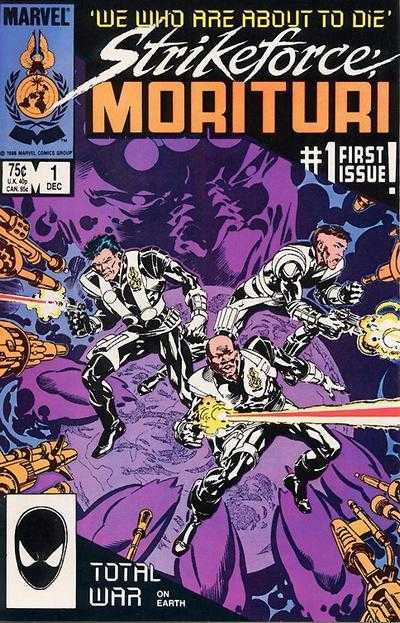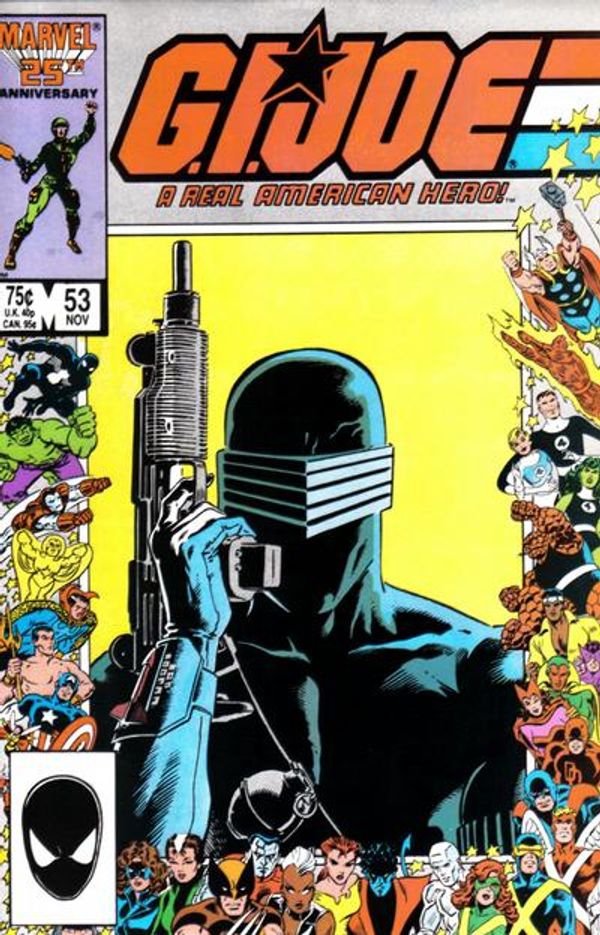
I liked Elfquest well enough when I read it, but I didn't pick it up regularly, and they all tend to run together in my memories. It doesn't help that I also read this material in the oversized collections you could check out from at least one of my school libraries. I read #14-16 some way, but aside from a moment here and there, there wasn't enough worth talking about worth bringing up. This third one though, I remember all too well, and may have contributed to my not keeping up with the monthlies. "Noisybad Highthing!" introduced these little multi-colored flying fairies with a very distinctly annoying speech pattern. They vomited sticky Spider-Man web fluid at people, and made victims hibernate for years at a time once encased in it. They fit that fairy tale sweet spot of being adorable to some and creepy to others, more the latter for myself. But Elfquest was also, in modern parlance, "horny on main," so that might have kept me coming back. Numerous pages were spent on two sets of half naked couples in some stage of getting their freak on, so despite being on the newsstand, the book did not carry a CCA approval stamp.
Embarrassing as it is to admit now, especially in light of the fantastically rendered headshot cover on The Mighty Thor #373, but in 1986, I couldn't easily tell Sal Buscema and Walt Simonson apart. I mean, if you put a Buscema Spider-Man and a Simonson X-Factor in front of me, sure, but they were similar enough on Thor to confuse me. The same subject matter and super-distinct work of the greatest letter of all time, John Workman, worked to muddy my perceptions. The book just kind of looked the same to my still developing eye for art styles. And it's not like I was regularly following the construction yard adventures of Sigurd Jarlson, which fairly screams "we're clear tired of the dual identity bit, but are unwilling to leave the safety of the familiar." The majority of this book involves Norse Gods babysitting other people's children. It was not my scene. But the last few pages drags Thor into the Mutant Massacre crossover, because I guess they figured to use a sales bump, or the Simonsons were just so deep into the plotting of more central books that it just spilled over. But yeah, a frog from the New York sewer told Thor about it while he was hanging in the park, and next thing you know, Angel's getting his wings pinned by harpoon. My half-brother bought this one a bit after the fact.
After utterly failing to live up to the hype, X-Factor #10 takes this bland, vestigial X-title and returns it firmly to the fold at the start of the Mutant Massacre and Walt Simonson's run as artist. If that wasn't enough, it's also a Marvel 25th anniversary cover with a Cyclops head shot and the well regarded gray border filled with Marvel heroes. Once again, I didn't buy it myself, but my brother did, and he loved it. I think Louise Simonson and Bob Harras knew the title needed a kick in the pants, so taking part in the first big X-title crossover, much less one with a huge body count that this specific issue contributes mightily to, was just what editorial ordered. We've got your Morlock tunnels lined with bodies, the Marauders, Sabretooth, Apocalypse, and it all ends with Angel's wings impaled to a wall. The kids were more responsive to this than Beast going clothes shopping, let me tell you.
Cracked #224 is scanned onto the Internet Archive, so I can confirm that I owned the issue, but I already had a good run at this magazine last month. It still looks pretty bad, but they've go some notable creators. Dan Clowes did an Ugly Family installment, Peter Bagge did a single page gag with Bill Wray-- I never realized how many '90s indie guys I dug were on this book first doing booger jokes. There's a Born in the U.S.A. cover and a Billy Idol on the back, both crossed with Sylvester the Janitor. There's a Cosby Show parody, and pop star Garbage Pail Kids, and this whole ninja mail order catalog thing. Whatever. Moving on. Unfortunately to Mad Magazine #266, which also took on Cosby, and they both took extended digs at Hands Across America. It was such a dumb idea. Other satires included Who's the Boss, Growing Pains, and Wheel of Fortune. Mad had all the guys that you associate with this type of mag, like Mort Drucker, Don Martin, Sergio Aragones, Dave Berg, Will Elder, Harvey Kurtzman, Angelo Torres, Jack Davis, and Al Jaffee. I don't think either title holds up, but at least Cracked was more visually fresh. Mad's art staff was more than a little long in the tooth, and the only way I can tell that this isn't a '70s issue is the subject matter.
I've been thinking recently about how utterly amazing the work of Bill Sienkiewicz was, especially in this period. But as a kid, I wanted nothing to do with him, and he was perhaps the first penciller that I outright hated. I've never been a Bob McLeod guy, and my tolerance for kid heroes is limited, so suffice to say I tended to avoid New Mutants like the plague. At one time, it was enough to be X-Men adjacent to score top ten sales status, but with more related titles and stronger competition overall, the X-office needed to run a tighter ship. Of course New Mutants #46 would tie into the Mutant Massacre, but more than that, we'd get at least one crossover per year thereafter to keep that ship afloat. Barry Windsor-Smith was doing their covers in this period, and this has to be among the worst of them. The X-Men and a bunch of Morlocks burst through a wall in the X-Mansion, to the surprise of the barely present titular leads. It looks like it should be an interior half-splash, especially with Colossus being given a dialogue balloon, plus it was the umpteenth variation of "you X-Babies clear out so the adults can get the actual work done." The interiors were by Jackson Guice and Kyle Baker, an interesting combo that I found far more palatable than previous art teams. Not the main thrust was that the X-Men had evacuated the homeless mutants being slaughtered en masse by the Marauders back to their pad, now serving as a makeshift medical ward. Please don't ask me to explain the logistics of people who, if I recall correctly, lived in the sewers on the island of Manhattan, walking in one night to upstate New York via those same sewers. Besides, more pages are devoted to the New Mutants characters that I was largely unfamiliar with muddling in their own affairs in the periphery, contributing nothing. In the end, the bugger off to fight the evil father of the techno-organic alien member that they'd adopted, so they couldn't even be bothered to battle a mutant during the Mutant Massacre. I can't even blame my brother, because I bought this one, but not the next.
Psi-Force #2 picked up where the first issue left off, with the runaways carrying their dead mentor's body, wrapped in a stolen rug, around downtown San Francisco. They're trying to get it back to their shelter, but face a Warriors' style gauntlet in completing that task. Hilary Barta and Romeo Tanghal don't compliment Mark Texeira as well as Baker in the debut, but it's still a much more attractive and contemporary looking title than most of the New Universe's offerings. Steve Perry juggles a lot of nefarious parties of interest pursuing these kids, with a steady ratcheting of tension. He's much better here than on the abortive Blackthorne Omni-Men series, and this book didn't live up to the potential established in his two issues for the rest of my time following it. But I did enjoy the title enough to stick with it for a while yet.
I recollect tossing through Strikeforce: Morituri #1 at the 7-11, but not picking it up. Like many of my generation, I have to fight the Mandela Effect of associating it with the New Universe, since it was developed for that line and released at the same time with a similar trade dress. Instead, I was given my brother's brother's laminated-cover copies of the first three issues. So possessing personally gimmicked editions, I of course finally read the things, and I thought they were swell. The premise was that aliens that were a cross between the Predators, the creature from Explorers, and the enthusiastic consumerism of E.T. began a reign of terror over the Earth. They mostly acted like raiding parties in old westerns-- dropping onto towns, raping and pillaging, collecting slaves, and slaughtering anyone who got in the way. Humans were initially powerless to stop them, until a scientist developed a procedure to literally empower people. The Morituri process first gave a subject superhuman strength to endure the rest of the process, and then the subject would develop superhuman abilities. The first group were a trio called the Black Watch, who died valiantly taking out the leader of the alien's campaign against Earth. They were immortalized in comic within a comic, and their story inspired more volunteers for the procedure to take the fight back to the invaders. The catch was that the Black Watch was originally supposed to be a quintet, but two volunteers died while their powers were being developed. A third spontaneously combusted, accidentally killing a fourth in the process. The human body simply couldn't sustain the Morituri process for long, and anyone who undergoes it were expected to die badly within a year. If I recall correctly, the book ran in real time, unless that ol' Mandela Effect is acting up again, mixing it up with the New Universe or The 'Nam. Regardless, all of the characters introduced here should be dead by the twelfth issue, and the book is as much about how they deal with their imminent mortality as it is about using their powers to fight the aliens. 1986 is considered by many to be the greatest year in comic book history for mainstream content, with the much heralded works of Frank Miller and Alan Moore taking up most of the oxygen. The Strikeforce: Morituri got something to say. At the end of the day, it's still a sci-fi melodrama most indebted to Chris Claremont, but Claremont rarely operated at this level. I'd argue it as a career best for Peter B. Gillis and Brent Anderson, aided by the shine of a newcomer inker named Scott Williams. The inker's buddy drew the comic-within-a-comic, and While Portacio would soon offer a few fill-ins to establish himself as a penciller. Even the late Jim Novak is reminding me that he rates high ranking among the best letterers ever.


